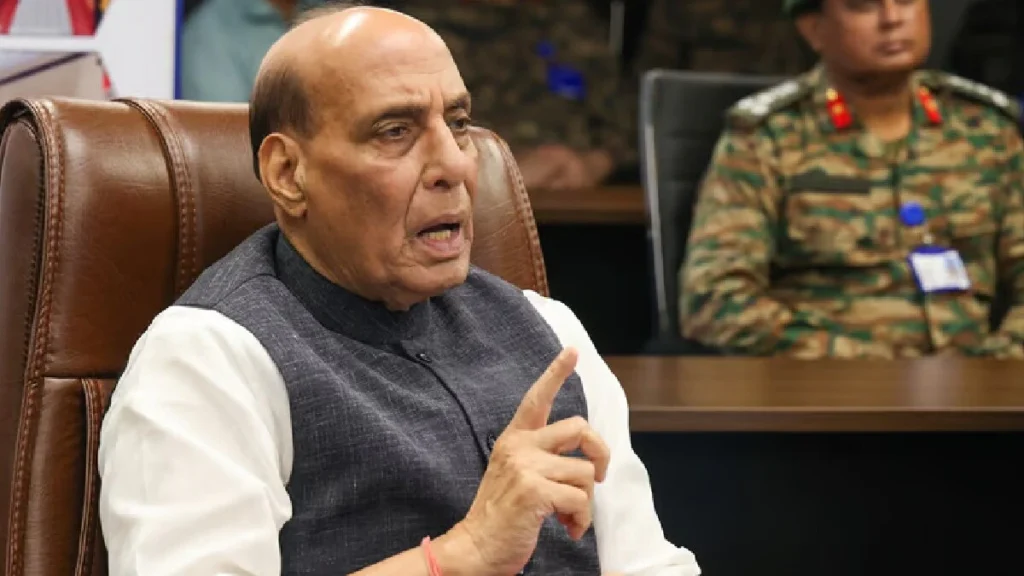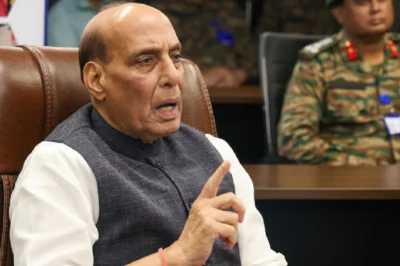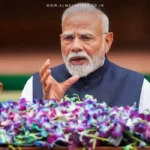
Milestone Moment for Armed Forces
India’s Defence Ministry, under Defence Acquisition Council (DAC) led by Rajnath Singh, has granted Acceptance of Necessity (AoN) for ten major defence procurement proposals totalling around ₹1.05 lakh crore. This landmark move signifies India’s decisive step towards bolstering defence capabilities across land, air, and sea, while championing self-reliance in military production.
Mine-Clearing Ships: Navy’s Top Priority
The single largest project earmarked is the construction of twelve Mine Counter Measure Vessels (MCMVs), with an estimated cost of over ₹44,000 crore. These vessels, to be built domestically through competitive bidding involving Indian shipyards and global tech partners, aim to neutralise underwater explosives threatening maritime trade and naval assets. This move addresses a long-standing gap; India has been without minesweepers since retiring its older fleet.
Air Defence Gets a Boost with QRSAM
The Army is set to receive three regiments of the indigenously developed Quick Reaction Surface-to-Air Missile (QRSAM) systems, valued at approximately ₹30,000–36,000 crore. Designed to protect mobile armoured units against incoming aerial threats up to 30 km away, these systems enhance battlefield flexibility and airspace protection.
Tri-Service Enhancements
Other key acquisitions include armoured recovery vehicles, electronic warfare systems, and a unified Integrated Common Inventory Management System to streamline logistics across the Army, Navy, and Air Force. These upgrades are aimed at increasing operational resilience, intelligence support, and strategic coordination.
Naval Capabilities Expand Further
In addition to the MCMVs, approvals were given for naval moored mines, super rapid gun mounts for quick-response defence, and submersible autonomous vessels, unmanned platforms that bolster maritime surveillance and undersea operations.
Eyes in the Sky: Spy Planes and Reconnaissance
The Air Force is reviewing procurement of three ISTAR (Intelligence, Surveillance, Target Acquisition, Reconnaissance) aircraft, enhancing India’s capacity to monitor and target adversary assets. Alongside this, upgrades to the Su‑30MKI fleet are under consideration.
Home-grown Push Under ‘Make in India’
Crucially, all approved procurements fall under the “Buy (Indian‑Indigenously Designed Developed and Manufactured)” category, underscoring India’s strategic policy shift toward domestic defence manufacturing. The move not only supports self-reliance but also strengthens the indigenous industrial base.
Operation Sindoor: Driving Momentum
This procurement agenda follows Operation Sindoor, the recent military engagement across the border with Pakistan, where Indian defence systems like Akash, QRSAM, and BrahMos demonstrated effectiveness. The DAC’s approvals are seen as an effort to build on this success and ensure India enters future conflicts with better-readiness.
Strategic Impact on Maritime and Aerial Theatre
The acquisition of MCMVs is critical in safeguarding strategic ports and sea lanes from underwater mine threats, while QRSAMs serve as a protective shield for frontline forces. The naval and aerial upgrades reflect a dual-track strategy of deepening India’s deterrence and expeditionary capabilities.
Logistics, Warfare Modernisation, and Secure Supply Chains
Investments in recovery vehicles, electronic warfare systems, and inventory management directly address the armed forces’ logistical and battlefield support needs. These enhancements are designed to ensure rapid deployment, supply efficiency, and electronic supremacy on the modern battlefield.
Broader Context: Self-Reliance and Export Potential
These deals align with a wider trend: India produced about 65% of its defence equipment domestically in 2023-24 and aims for ₹3 lakh crore turnover by 2029. Defence exports and public–private industrial ties are rapidly expanding. This monumental procurement phase not only boosts capability but also fuels the domestic manufacturing ecosystem.
Looking Ahead
With ₹1.05 lakh crore in proposed acquisitions, India is set on a path of defence unshackling, sharpening mobility, surveillance, firepower, and maritime security. These strategic investments are vehicles for modernisation, while deepening the industrial capacity under India’s ‘Make in India’ vision.
Conclusion
This procurement wave marks a breakthrough in India’s defence posture, merging urgency borne from potential conflicts with a confident stride toward technological self-sufficiency. If executed effectively, it will elevate India’s global standing in defence, protect its frontlines, and empower a rapidly growing domestic defence industry.








































Leave a Reply